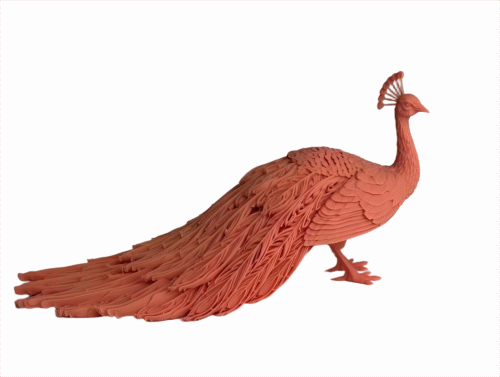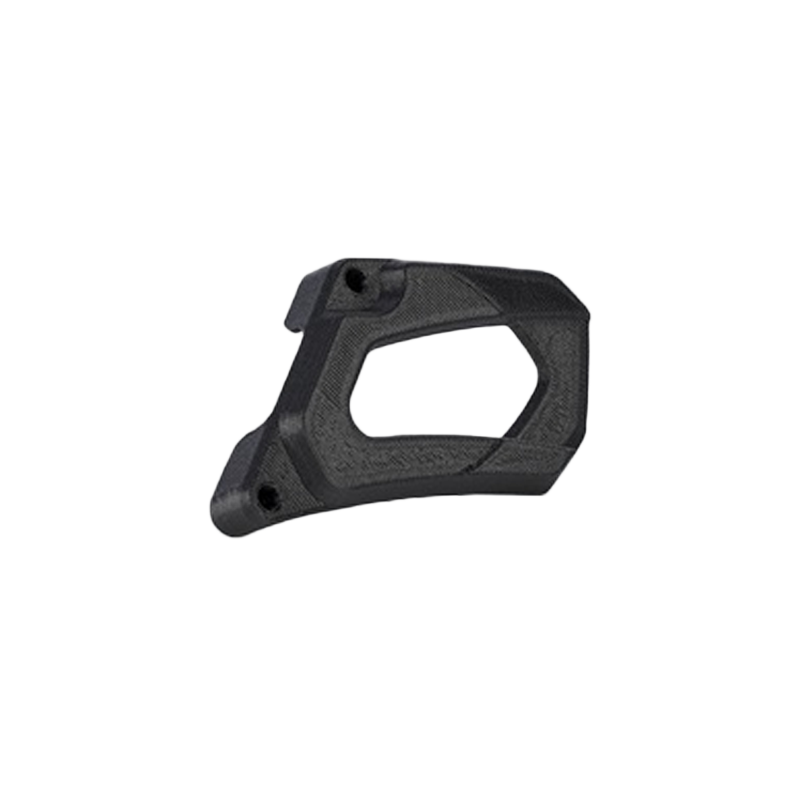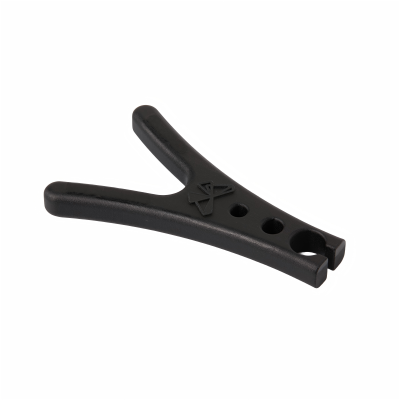Compare 3D Printing Materials
Explore and compare 3D printing materials to find the best fit for your project. From durable plastics to flexible resins, our guide highlights key properties like strength, flexibility, and surface finish, helping you choose the right material for prototyping, production, or custom parts.
Red wax
Process: DLP
High Precision, Smooth Surface
Wax materials are a special type of material commonly used in 3D printing, primarily applied in rapid prototyping and precision casting. They offer excellent flowability and moldability, allowing for high-precision detail during the printing process. Red wax, in particular, has a vivid color, usually deep red, hence the name “red wax.” One of its key features is its ability to melt quickly when heated, facilitating subsequent casting processes, making it especially suitable for jewelry, art sculptures, and the manufacture of complex mechanical parts.
In addition, red wax materials have moderate hardness and a smooth surface, requiring minimal post-processing after printing, which helps maintain the accuracy and surface quality of the print. Because it can be melted at high temperatures, it is also commonly used in the “lost wax casting” process, playing a crucial role in precision casting.
PLA
Process: FDM
Durability, Biodegradable, RichColors, Economical
PLA is a high-quality, high-performance, and cost-effective 3D printing material, offering excellent layer adhesion and impact resistance, resulting in durable and long-lasting prints. The base series comes in up to 30 colors, ensuring uniform color consistency and stable printing quality. PLA is made from renewable plant-based resources, eco-friendly, non-toxic, and biodegradable. It is reliable, easy to use, and provides high cost-performance with a wide range of colors, making it an ideal choice for home, education, and industrial printing.
Antistatic resin
Process: LCD
Antistatic Properties
3D printing antistatic resin materials are typically achieved by incorporating conductive fillers or ion-type additives into the resin, effectively reducing the material’s surface resistivity. These materials are specifically designed for applications in electronic devices, precision instruments, and other areas where static interference must be prevented. The material effectively suppresses static accumulation, ensuring that printed parts remain free from charge interference during use, while maintaining excellent mechanical properties and precise printing details. Whether for manufacturing sensitive components or performing high-precision assemblies, antistatic resin is the ideal choice.
Flame Retardant Resin
Process: LCD
Flame Resistance
Flame-retardant resin is a high-performance material formulated with specialized additives to significantly reduce flammability and slow down flame propagation. While maintaining excellent mechanical strength and processability, it meets stringent fire safety standards. Ideal for electronics enclosures, aerospace components, transportation parts, and other applications requiring superior fire resistance, this resin enables precise 3D printing of complex geometries while ensuring reliable performance under high temperatures and flame exposure.
Stainless Steel 17-4PH
Process: SLM
Corrosion Resistance, HighStrength, Wear Resistant
17-4 PH stainless steel is a precipitation-hardening stainless steel known for its excellent hardness and corrosion resistance. Through vacuum solution heat treatment and H900 aging treatment, printed parts can achieve high strength, high hardness, and good wear resistance. 17-4 PH stainless steel is suitable for manufacturing industrial components that require high strength, corrosion resistance, and complex structures, such as aerospace parts, molds, and high-load machinery.
Disadvantages: Low elongation (≤16% after heat treatment); weak magnetism after heat treatment.Aluminum
Process: SLM
HighStrength, CorrosionResistant, Lightweight
3D printed aluminum alloys, represented by AlSi10Mg and other aluminum-silicon-magnesium alloys, combine lightweight characteristics with excellent mechanical properties. They offer an outstanding strength-to-weight ratio, good corrosion resistance, and thermal conductivity, and demonstrate excellent fatigue and fracture resistance after heat treatment. The material is easy to form, weld, and machine, making it ideal for aerospace, automotive, and tooling applications where lightweight design and structural complexity are critical. Finished parts are typically shot-peened for surface treatment. If you require any other post-processing, please inform our customer service clearly.
Disadvantages: Poor heat resistance (maximum 120°C); surface roughness around Ra10, with slight pits and visible layer texture.







